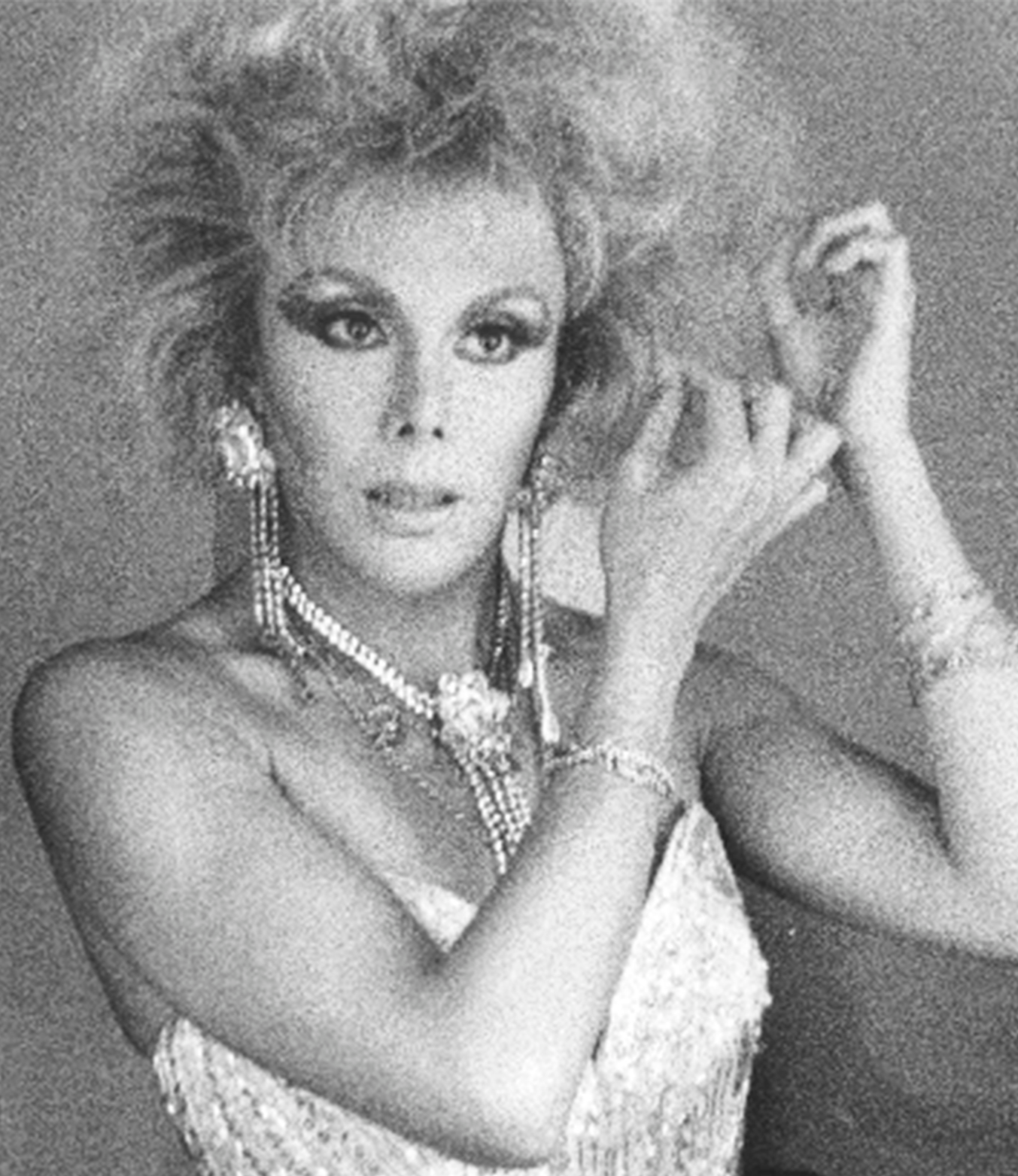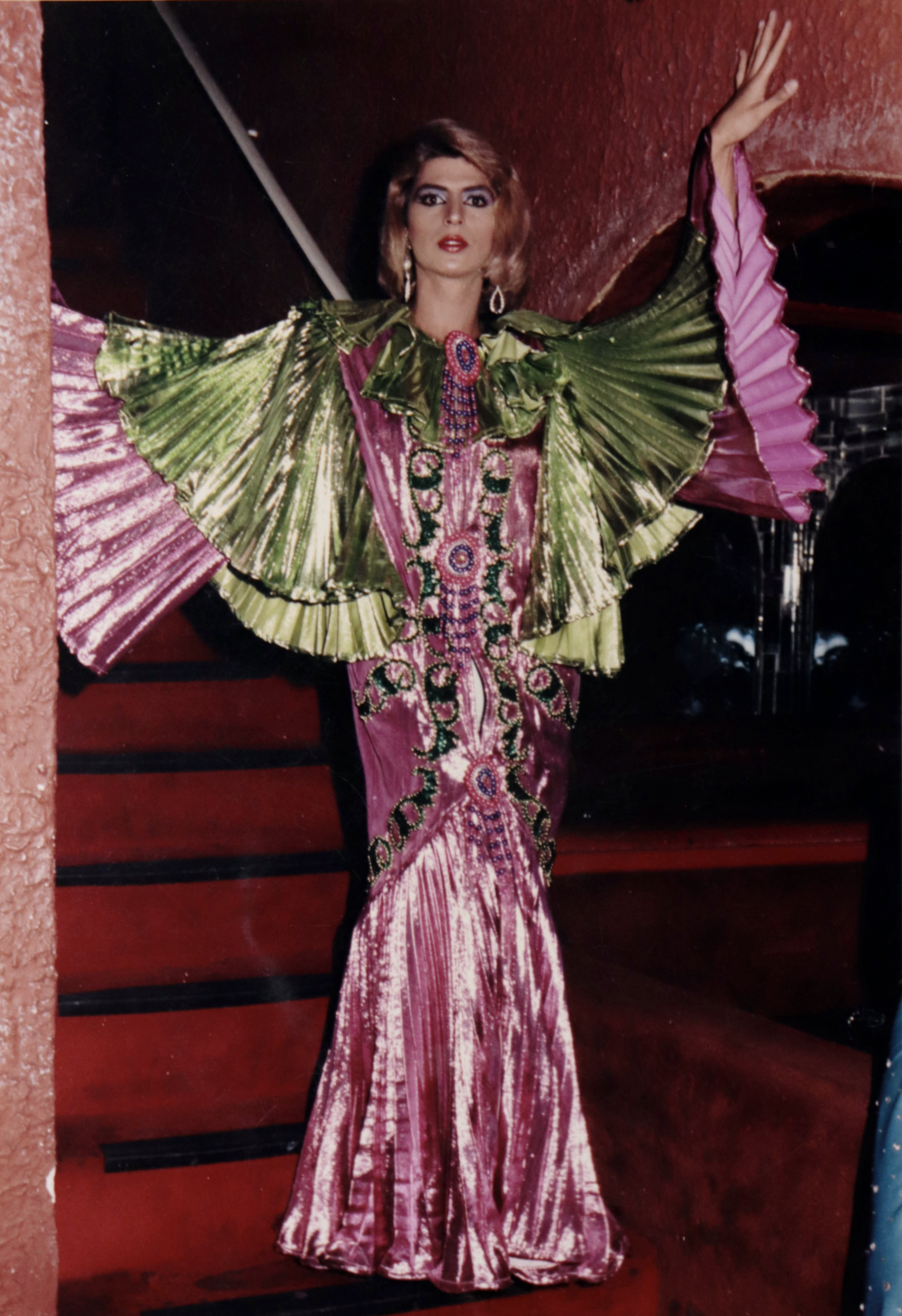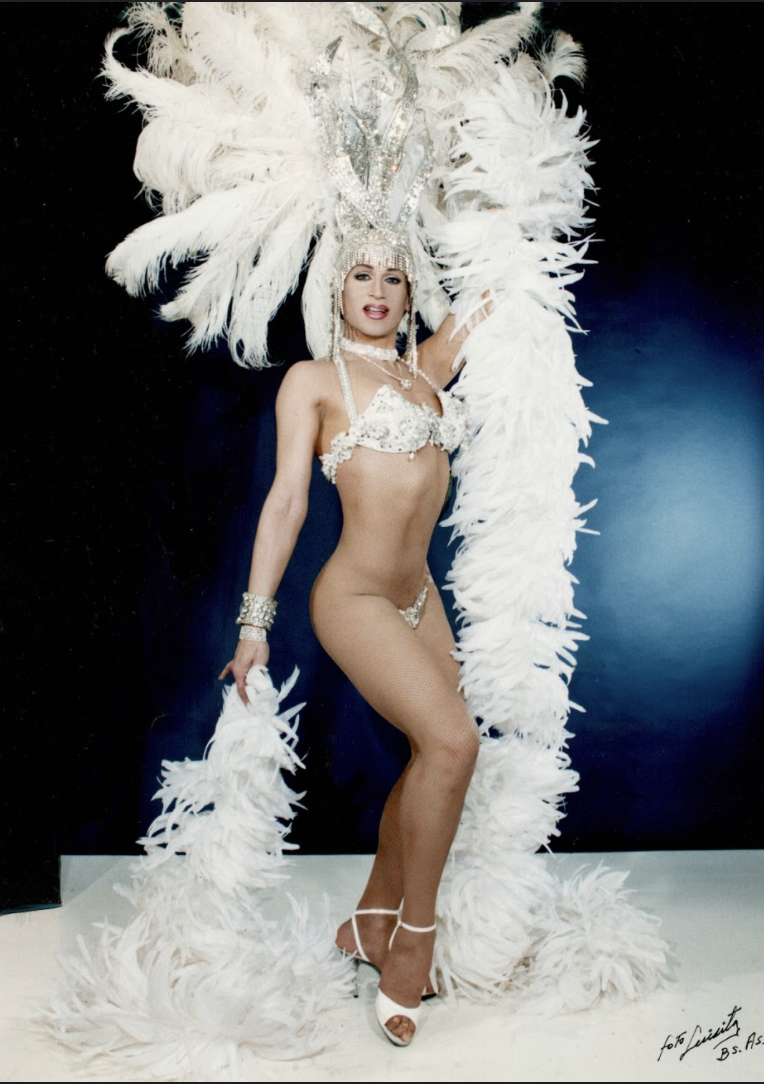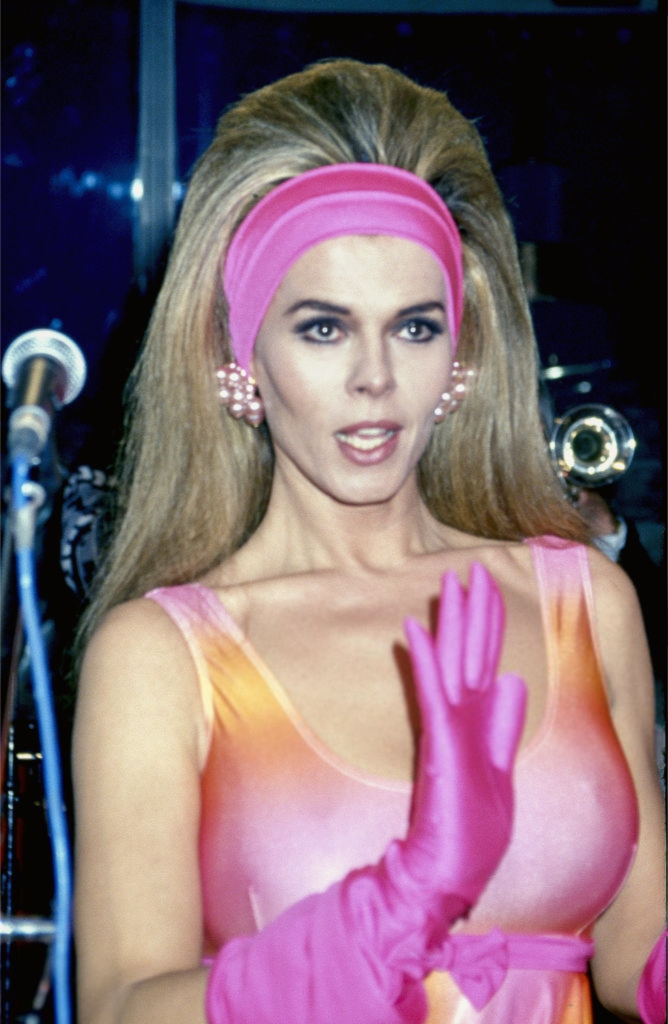Ficheraz is a collective dedicated to study and preserve the legacy of vintage showgirls all across Latin America, the Caribbean, diaspora and beyond. Amid one of their most recent research, they came across a pattern: Some of the most recognised showgirls of the late-20th century were in fact transgender women and drag queens. To inspire and educate the younger generations about these entertainers, who succeed despite the stigmas about gender and sexuality of the time, they wrote this story hoping to spread awareness.
Mexico City, 2020 — Queer culture has always been marginalized, usually reduced to an afterthought in the mainstream consciousness. Until a couple years ago, before shows like RuPaul’s Drag Race and Pose appeared, queer entertainment was heavily associated with everything beyond the border of the underground. However, LGBT artists have lived through many contexts and have gone through many incarnations throughout history, from what has been censured to what was applauded and approved by high society.
In fact, in the late 20th century, an important generation of queer Hispanic showgirls ruled the theatrical scene, in both, Latin America and Europe. Ironically, their stories are seldom heard of, despite having succeed in an industry dominated by cis-gendered women and in an age of heteronormativity.
Francis (1959-2007)
Drag Queen

In the 1980s, when Mexico was recognized worldwide as one of the great capitals of entertainment, it was thanks in no small part to this performer: the outstanding and virtuous drag queen Francis, otherwise known as ‘The last great showgirl’.
The story of his life begins in the city of Campeche, Mexico in 1958. Francisco Del Carmen, as his real name was, was raised by his mother and aunt, both seamstresses, who introduced him to the world of fashion design from a very early age. He entered showbiz, first as a costume designer for carnival dancers and pageant queens of his hometown in the early-1970s, and by the end of the decade he had already settled in Mexico City, capital of the country, to dress some of the most popular showgirls of the time.
Life took him from working as a cabaret tailor to a cinematic costumier, and in 1978 he decided to take a step forward and audition for a role in the movie ‘Noches de Cabaret’ (Cabaret Nights), one of the most controversial films in the history of Mexican cinema. Francisco, and a dozen other gay men make a funny cameo as drag queens, in the strangest remake of the German classic ‘Victor Victoria’.
At that time, drag queens weren’t taken seriously as entertainers in Mexico; they were often ridiculed, underappreciated and used merely for the entertainment of an audience that did not understand how diverse gender identity and human sexuality could be. Basically, the butt of every joke.
It was then that he decided to re-dignify the genre, and took it upon himself to do so in the best possible way. Using his knowledge as a designer, along with the experience of working for some the most recognized showgirls of the time, Francisco created Francis, his drag persona, who starred in a one-of-a-kind production, in which he combined the
art of cabaret, drag, and impersonation in an act as glamorous as it was hilarious. ‘The Francis Show’ was such a success that multiple seasons were held at different venues all over the country and in the United States, until the late-1980s, when he became an exclusive feature of the legendary Blanquita Theater, one of the most prestigious venues of the country. Francis was so popular, that his 6-month season at the Blanquita extended to 15 years. A drag queen starring in the country’s most renowned theater for over a decade… Impressive.
Francis lived through the early-00s. He became a recurring character on television and used every opportunity to educate the masses about sexual diversity and gender identity. Sadly, he passed away in 2007 due to pulmonary thrombosis.
Vanessa Show (1950-Present)
Trans Showgirl

When talking about LGBT entertainers in Latin America, it is impossible not to mention Vanessa Show, a legendary self-identified transvestite, who paved the way for Argentinean trans women in mainstream media.
Vanessa was born in 1950, and she lived a lavish childhood in a wealthy upper-class family —her father was a successful Egyptian farmer and her mother a Moroccan heiress—, they were both Muslims, and from a very early age Vanessa was held to Islamic moral standards by her parents.
At 13, after finishing elementary school, Vanessa escapes from her home in Santiago del Estero, looking to find herself. She settles in Buenos Aires, capital of Argentina, where, despite the fact that she was destitute and homeless she pursues a career as a performer. In the city, Vanessa works as a dishwasher and potato peeler, and invests every penny earned in dance classes. At 15, she begins working as a backup dancer in some of the most prestigious venues of the city, the Maipo and the National theatres. There, she performed elaborated tricks and choreographies alongside some of the most recognized showgirls of the time.
It wasn’t until the early-1970s, with the dawn of sexual liberation, that she began to explore her gender identity through clothing. She presented herself as female for the first time on September 21st, 1971; during the spring parades in Buenos Aires. Alongside a group of male dancers with whom she worked, Vanessa got in full drag and took to the streets to celebrate along with her friends. That was the moment when she realized that she felt more comfortable presenting herself as a female than as man.
She quit her job as a backup dancer to pursue a career as a showgirl. She began working in minor venues and cabarets in the city of Buenos Aires until she earned the main role in a production at the legendary Teatro Corrientes. At the time, drag and female impersonation where illegal, and she was severely censured by the authorities. In this regard, she recalls in a 2019 interview:
“It was a burlesque theater. I was the star and I was backstage, about to go out and close the show. All of the sudden, two police officers burst into the dressing rooms shouting
“Where’s the man dressed as a woman, we’re going to arrest him”, to which I answered by pointing my crimson nail: “He ran over there!”, and they didn’t suspect. I was unclockable.”
Her career took off in the mid-’70s, as she was hired to work around the world. She had important seasons in Italy and Spain, while in France she is considered one of the most memorable showgirls of the legendary ‘Carrousel de Paris’. She was also one of the very first trans entertainers to succeed in Morocco, country in which she lived for almost a year. She worked successfully abroad for almost 20 years.
She returned to Argentina in the early 1990s, and her success around the world earned her multiple commendations. Today, she is recognized as an authority in the theatrical world, and she is partially in charge of the wardrobe department for plays and musical revues at some of the most important venues of the country.
Alejandra Bogue (1965-Present)
Trans Performer

Actress, dancer, stripper, comic, impersonator, performer, singer, showgirl, TV hostess… The list goes on. Alejandra was undoubtedly, one of the most influential queer performers in México during the late 20th century. Her first approach to the world of entertainment happened in 1979, when she was only 14 years old. At the time, the artistic and cultural life of the country’s capital was concentrated in a single establishment, the bar ‘El 9’. There, she was exposed to a whole new ambiance, one in which identities and artforms couldn’t be easily defined.
Being barely a teenager, Alejandra joined the most controversial group of performers of the country, Mexico’s very own version of the Club Kids, with whom she trained in the art of performance and began her transition. By the early-1980s she was already a recognized figure of the city’s nightlife circuits, in addition to working as a model and an actress. Her striking beauty captivated American photographer Joel Peter Witkin, who immortalized her in “The Soul Has No Gender”, a controversial image in which Alejandra embodies a phallic Frida Kahlo. In addition to her work as a club personality, she occasionally participated as a performer at cultural events, as a voguing dancer in queer balls, and a stripper at burlesque festivals.
In the following decade, Alejandra moved from Mexico City to Acapulco, where she began a career as a celebrity impersonator at the Gallery, an internationally renowned female impersonation club. The show was a very Las Vegas-style, and its attendees were mostly American and European tourists, honeymooners who enjoyed a good variety show. In just a couple of months, Alejandra went from being a newcomer to the star of the venue. Her success was such that the club manager let her perform original numbers, which allowed her to develop a new artistic phase, this time as a showgirl.
Upon her return to Mexico City, Alejandra left behind the glamour of clubs to pursue a career as a dramatic actress. She joined an all-star cast in the staging of Jean Genet’s ‘The Maids’, play with which she had full house performances for 2 years, and which earned her the recognition as a female revelation by the national association of theatre critics in 1998.
Alejandra became the first transgender person to be taken seriously as an artist in the history of Mexico, which eventually allowed her to continue her career in television.
Having accomplished so much, the only genre left for her to dabbled in was comedy, and so she did! Her television debut was in the 2002 show ‘Desde Gayola’, a hilarious comedy show that pioneered the visibility of sexual diversity issues in Mexican TV. In a brilliant way, Alejandra became a screenwriter, and she was in charge of writing lines for her and her fellow cast members. In addition, she created various characters, such as Betty VO5 or La Tesorito, which became a vital part of the country’s LGBT culture.
Gustavo Moro (1960-Present)
Drag Queen

To talk of drag as a respected art form, in pre-Drag Race era, was completely unimaginable, even more so in Latin America. Underrated and rejected by the masses, its performance spaces were limited to underground clubs and private parties. It was not until the late-1970s that the media began to give visibility to this type of entertainment, and a pioneer in this genre was Gustavo Moro, better known as ‘La Moro’.
Gustavo began his career as a performer dancing in the chorus lines of the big theatrical productions, during the golden age of the Argentine revue. Of an incomparable technique, exceptional physique and incredible stage magnetism, Gustavo quickly went from the chorus lines, to being a back-up dancer, and from there to being the main dancer of the numbers, performing tricks and elaborate choreographies alongside the most recognized showgirls of the time.
He reached the epitome of his career as a male dancer in 1978, when he was hired to choreograph legendary showgirl Moria Casan, Argentina’s very own Cher. Aghast by her immense personality, Gustavo found in Moria his alter-ego, and began impersonating her, in a comical way, at private gatherings. He was so good at it, that in a matter of months he was already doing it professionally, onstage for a live audience or in TV shows.
However, he did not want his entire career as a female impersonator to be based on Moria, and created a character ‘La Moro’. This new drag persona, was his very own version of a showgirl: glamourous, flamboyant, elegant, sexy, dainty and skilled. It has been almost 40 years since Gustavo began his drag career, and since then he has appeared on stage, starring in musicals, on television and even in movies.
However, his long artistic career is constantly being downplayed by sensationalist subjects, such as his sexuality or gender identity. In this regard, he recalls in a 2008 interview:
“We must to clarify, because people confuse everything, they often mistake the concepts of transvestite, crossdresser and transsexual… The truth is, why do you care? It’s no one’s duty to be analyzing the behavior or sexual tendencies of queer people. Stop!“
Bibi Andersen (1954-Present)
Trans Showgirl

Bibiana Fernandez was born in Tangier, Morocco in 1954. She lived a childhood full of shortcomings, both financially and emotionally. Her parents divorced on Christmas night, when she was just 6 years old. Bibi and her brother went to live with their father, who didn’t really spend any time with them. During the day, he worked as a taxi driver, and at night he spent his entire salary on bars and prostitutes. Bibi remembers picking him up from the brothels so he could take her and her brother to school.
At 13, in an attempt to escape that toxic lifestyle, Bibi moved from Tangier to Malaga, Spain, and from there to Barcelona, where she tried her luck as an artist. Just as her childhood was not easy, due to her father’s fondness for night-time running, it was also not easy to find her way in the Spain of the time. The extreme right-wing dictatorship of the military man Francisco Franco, had a cero-tolerance policy for homosexuality -let alone transsexuality-, and Bibi, although not yet undergoing any hormonal processes, already presented herself as a female.
Bibi began her career in Barcelona’s Paralelo, an area that concentrated the country’s top theatres, music halls and cabarets. Her first performances were at the Ferrer clubs, where she shared the stage with strippers and drag queens. From there, she went on to perform in theatrical revue, where she made her showgirl debut.
Her act was extraordinary: she danced and sang in a very particular style. She wore elaborate costumes, decorated with the finest crystals and ostrich feathers. In the musical numbers, she was accompanied by her very-own ballet, and in the final number she dazzled the audience performing in pink silk robe, which she ended up taking off to show off her Hermaphroditus-like anatomy. Her show was so controversial that it drew the attention of the international press, which constantly criticized her gender identity and genitalia. In this regard, she recalls: “I think, feel and dream like a woman. What does it matter that I have the male organ! I don’t like being called a transvestite because I Identify as women”.
In this period, she was discovered by director Vicente Aranda, who gave her the lead role in the film ‘Sex Change’ (1977), movie in which she explicitly bares her pre-op anatomy, causing uproar in the political, religious and journalistic spheres of the time. In a matter of weeks, Bibi went from being just another showgirl to the most recognized figure in the Spanish artistic scene. Her new star status, allowed her to join the so-called ‘Movida Madrileña’, a counter-cultural movement that emerged in Madrid during the late-1970s, in which the biggest names in art, fashion and music participated.
In the scene, Bibi befriended film director, Pedro Almodóvar, and under his direction she appeared on films that earned both of them international fame. Together, not only with him, but also with his group of unconditional friends, they brought to life the nights of the Madrid scene in the 1980s, and also formed the group known as the Almodóvar girls.
Bibi proved not only to be an excellent artist: actress, singer and dancer, but she also managed to do everything she wanted, even if her family, her situation or even the
government forbade it. Today, she is recognized as a trailblazer for trans performers all over the world, and at 66 she is still beautiful and more active than ever.
This article was originally published in A Tribe Of Women (ATOW), with which E&M collaborates.
Cover photo: by Ficheraz.





